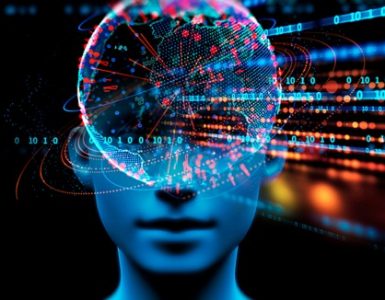We have been hearing quite a bit about self-driving cars and advanced chatbots that use natural language processing for contextual conversations and automated fraud detection in various industries. But what is powering all these fantastic applications related to Data Science?
Deep Learning Frameworks – that’s the answer that you are looking for.
Yes, apart from Big Data Analytics, Deep Learning is a core focus area for Data Science with immense real-life applications in both healthcare and business. But what exactly do we mean by Deep Learning?
If you are confused between Machine Learning and Deep Learning, you are not alone, as both these terms are thrown around quite often in the tech world, leading to some unnecessary confusion. The reason is that Deep Learning is just another Machine Learning technique, which is why these terms appear together so very often. However, Deep Learning is quite different from other Machine Learning techniques like Multiple Regression or Decision Tree, because it is based on the neural pattern of the human brain.
Simply put, Deep Learning systems are made up of layers of virtual neurons that are interconnected to each other. The job of each neuron in these layers is to add all the inputs coming into it and decide whether to send an output signal to the next layer of neurons above it or not. Overall, the model gets very complicated, owing to multiple connections between neurons, and can be quite time-consuming to emulate.
What Are Deep Learning Frameworks?
As you already know, Deep Learning has several applications in the modern world, such as natural language processing, enabling digital assistants, fraud detection, face recognition technology, etc. However, given the complexity of neural networks, it isn’t always feasible to build Deep Learning models from scratch for every data-set or experimentation. That’s because creating a fresh Deep Learning model can take weeks at end, which is why Deep Learning Frameworks are great for those with limited time or computational power to kickstart their projects using a readymade frame. Deep Learning Frameworks also provide greater accuracy to improve operations and reduce time to market.
Generally speaking, open-source Deep Learning Frameworks are easy to use and simplify the implementation of complex Deep Learning models. Each framework is meant for a different purpose and has its pros and cons.
To help you get started, we assessed various factors and have curated the top five Deep Learning Frameworks that you must know in 2020.
Top 5 Deep Learning Frameworks of 2020
1. TensorFlow
TensorFlow was developed by the scientists and researchers in the Google Brain team and happens to be the most commonly used Deep Learning Framework by developers. Top reasons that contribute to its popularity are:
- Truly open-source framework with excellent community support
- Extensive documentation and walkthrough videos by Google that make the framework a breeze to implement
- Contains pre-written codes for most commonly used Deep Learning models to make life much easier
- Supports multiple languages like Python, C++, and R to create Deep Learning models
- Flexible architecture enables deployment of Deep Learning models on multiple CPUs and GPUs
- Top use cases include language detection, face, image and sound recognition, video analysis and time series analysis Image captioning, and face recognition
2. Keras
Keras is a Deep Learning Framework built on TensorFlow, but it is much easier to use, making it an excellent tool for beginners. Keras framework requires minimal code and provides TensorFlow backend workflows, which means you can graduate to TensorFlow soon. It has a Python-based library designed for beginners, owing to rapid experimentation and lightweight in terms of DL layers. It is an easy to implement framework that can run on top of other frameworks like TensorFlow, Microsoft Cognitive Toolkit, and PlaidML. Keras also comes with built-in support for data parallelism, which means it can process large volumes of data at an accelerated speed.
Keras has several advantages for beginners, especially in terms of easy learning and fast experimentation. However, it has limitations when it comes to prototyping and uses a different library ‘backend’ for low-level computations, which slows down the process.
3. PyTorch
PyTorch is another open-source Deep Learning Framework, which was developed by Facebook. It is primarily based on the Torch library and has been designed to speed up the entire process from prototyping to development.
- PyTorch is ideal for training, building or deploying small projects or prototypes and used mainly for natural language processing and computer vision applications.
- The versatility of the framework is attributable to the fact that it is a Python package providing tensor computations using the Torch Deep Learning Framework. Deep integration with Python also allows the usage of popular libraries for writing neural network layers in Python.
- PyTorch also uses dynamic, computation graphs instead of predefined graphs, which is helpful when you don’t know how much memory you’d need for creating a neural network
- The framework uses a ‘torch distributed’ backend, which is useful in distributed training and research optimization.
4. Sonnet
Sonnet is a high-level library designed for building complex neural networks in TensorFlow. Sonnet was developed by DeepMind and offers a simple yet potent programming model around self-contained modules.
Sonnet is used to develop primary Python objects that correspond to a specific part of a neural network. These objects are subsequently connected to the computational graph, simplifying the design of high-level architectures.
5. Caffe
Caffe was developed by Berkeley Artificial Intelligence Research (BAIR) and stands for Convolutional Architecture for Fast Feature Embedding. It is written in C++ with a Python Interface and most commonly used for image detection and classification.
- Caffe offers speedy image processing and is often used for large scale industrial application in vision and multimedia.
- It is most commonly used for building and deploying deep learning models for mobile devices
- The framework supports both CPU and GPU based computational kernel libraries, like NVIDIA and cuDNN.
- Unfortunately, Caffe is not very useful for language processing models and RNNs
Deep Learning for Software Engineers
As a software developer, you already know coding, and you are comfortable with various programming languages, which makes deep learning an attractive career proposition for you. Deep learning is becoming increasingly popular in the field of software engineering of late, to solve typical problems like generating source code, predicting defects in software and extracting requirements from natural language text.
If you wish to upskill yourself in this field, you need to start with an introductory Machine Learning course focussed on Deep Learning, which is one of the various Machine Learning techniques. Generally speaking, both Machine Learning experts and Software Engineers earn handsome salaries, but there is a glaring shortage of professionals in the former role, making it a viable skill to add to your resume and boost your chances of landing a well-paying job with a renowned company. You can also register your profile on Talent500 to empower your job search for Fortune 500 companies.






Add comment